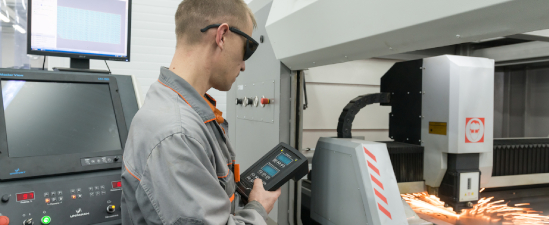Saving Costs through effective Automation
Date Published: 04-05-2020
As we move toward what will hopefully be the last week of full lockdown, many production facilities will need to gear up and get back into the full swing of things.
An essential element of coming back from this precipice and remaining competitive will mean everyone will be on the lookout for cost savings and every means possible to move forward efficiently. Efficiency however is a word you may very well hear bandied about often in the lead up to full production and beyond! What is true efficiency though?
Efficiency in its truest sense is a measurable state which avoids waste of material, energy, effort, money and time while achieving and producing a desired result. That is a tough act to follow, but one that all of us here in South Africa are going to need to achieve in the coming weeks, months and even possibly years!
Efficiency in its truest sense is a measurable state which avoids waste of material, energy, effort, money and time while achieving and producing a desired result.
How do we truly achieve that in production?
Obviously, we all have limited resources and efficiency is all about getting the most out of what we already have. We can’t simply always employ more people, acquire more costly machinery…such efforts can waste money and don’t mean we’re using what we already have truly efficiently.
What we need to do is start looking for ways to push what we have already in place, be it staff, machinery and whole production lines, to the point where they are most efficient. We can achieve that with simple, yet effective automation! How so?
Well, material, energy, time and financial costs can be saved directly and indirectly in all our endeavours. Direct costs are incurred by producing article A, for example. Article A needs raw materials to be made, it requires someone to make it, which expends time and energy and that whole process costs money. Article A also has indirect costs we might not readily be aware of. What if article A isn’t produced correctly, or ends up being a rejected part. That means a wasted amount of raw material, energy, time and cost. Not great! Not very efficient!
Worse yet, what if article A isn’t recognized as a reject and ends up going out to our customer and there, is recognized as inferior. Here, the indirect cost of article A grows exponentially. With an unhappy customer, our existing contracts are put in jeopardy as well as any potential future business with these customers…and anyone they speak to, and they will speak about it! This cost to our reputation is a massive indirect cost that many fail to truly take into account.
Obviously, we all have limited resources and efficiency is all about getting the most out of what we already have.
So how exactly does automation help eliminate all these direct and indirect wastages and costs?
Automation is proven to be far superior in increasing both quality and efficiency. With less shop-floor mishaps and wasted raw material through effective automation, in the long run, this route saves both direct and indirect costs.
With less intervention, we protect our workers and reduce the number of defective parts, thus ensuring we make the wisest and most efficient use of our resources upfront, while at the same time avoiding the embarrassment of sending defective parts to our customers and ratcheting up massive indirect costs. With automation running and checking processes, we can reduce wastages down to fractions of percentages, thus ensuring true efficiency!
That’s only one half of the equation though…efficiency can be achieved through automation…but it needs to be an effective deployment of automation that is going to give you the greatest payback and return on investment.
Who can you partner with to allow you to achieve effective deployment of automation? S4 have been involved in the effective deployment of turnkey automation projects for over 25 years! Our track record speaks for itself…just ask any of our customers.
Please feel free to contact us to discuss your potential automation projects. We offer a full range of services, including:



